Osteochondrosis is a widespread disease of the intervertebral disc, which occurs in people from various age groups.Today it is diagnosed in more than 40% of young people under 35, and in older categories it affects 9 out of 10 people.It has several stages of development, and previously the pathology is detected, the easier and more effective treatment is and the lower risk of developing harmful complications.
What is osteochondrosis
The intervertebral disc is located between the body of the vertebrae and is a shock absorber that absorbs pressure while walking or doing other physical activity.They have different sizes depending on their position: in the cervical region the disc is the smallest, and in their lumbar spine they are the largest.
They are all built together.In the middle is the pulposus nucleus, which is the main component of the disc and has a high elasticity.It is surrounded by fibrous membranes and endplates.
Osteochondrosis is a degenerative-dystrophic disease in which there is a change in the form and size of the intervertebral disc due to their abrasion and a prerequisite for the formation of hernia, vertebral body deformation, spondylosis and other disorders.
Disc depletion is due to deficiency of cartilage tissue, which leads to a gradual decrease in its elasticity and increased fragility.
As a result, disks change, their height decreases, and microcracks are formed on their fibrous membranes.This creates a serious prerequisite for the formation of intervertebral hernia, pinching the spinal cord or blood vessels.
Even slight changes in disc conditions cause their functional impairment.This is accompanied by different pains -different levels of intensity.At the same time, prerequisites are created for the development of internal organ diseases, as the quality of their activity directly depends on the condition of the spine and the conductivity of bioelectric impulses along the nerves.
It can affect one or more intervertebral discs wherever the spine.Therefore, osteochondrosis is diagnosed:
- cervical spine;
- Thoracic spine;
- lumbar spine.
In very severe cases, the pathological process involves the majority of intervertebral discs spinal columns, which are accompanied by discomfort throughout the back and loss of almost complete performance.But often, osteochondrosis affects the lumbar spine, as it bears the biggest load, as well as the intervertebral disc cervical spine due to their high mobility.
Development
During osteochondrosis, 4 stages can be distinguished:
- Decreased the level of disk hydration, leading to dehydration and microcess formation.Usually at this stage there is still no manifestation of early disease.
- Decreased disc height, leading to the appearance of the first symptoms of pathology.At this stage, there is a decrease in the distance between the individual segments, leading to a decrease in spinal ligaments and creates the possibility of vertebral displacement from their natural position, the development of spondylolisthesis.In such situations, diseases like this disease are most commonly observed.It can distinguish between severity, accompanied by acute pain, and a period of forgiveness, where there is no discomfort at all or pain.
- Deformation of intervertebral disc affected by the formation of protrusion or prolapse.Sometimes there is joint involvement in the pathological process, which is characterized by the development of arthrosis or vertebral subluxations.At this stage, the immune system responds to the processes that occur in the spine by developing aseptic inflammation with swelling of the tissues surrounding the affected spinal motor segment.In this case, pain occurs regularly, reflex muscle cramps, and limitations in mobility, can be observed.In rare cases, the signs of neurological deficits (radical syndrome) have developed as a result of pinching nerve fibers by the resulting intervertebral disc protrusions.
- Development of complications.Because the human body has extensive compensation capabilities, when the intervertebral disc loses its ability to perform its function, the osteosynthesis process is activated to secure vertebrae in a stable position.This leads to the formation of bone protrusion - osteophytes - on the edge of the vertebral body of the affected spinal cord segment.As a result, due to them, two or more vertebrae are strictly together, forming a single conglomerate, namely spondylosis.This often leads to pinching nerves and the development of acute neurological symptoms in the form of paresis, paralysis and serious disorders in the functioning of the internal organs.
Cause
Today there are many theories for the development of osteochondrosis, including vascular, mechanical, hereditary, hormone, allergies and more.But none of them can fully explain the developmental mechanism of change in intervertebral disc tissue.Therefore, most likely, they all complement each other.
Therefore, a large number of very diverse factors can lead to the development of osteochondrosis.Among them, the most important thing is:
- genetic tendency;
- heavy physical work performance;
- maintain an inactive lifestyle;
- the presence of scoliosis or other spinal defects;
- suffering back injuries;
- unbalanced diet, vitamin deficiency;
- infectious diseases;
- metabolic disorders;
- Congenital anomalies of the spine (kimerli anomalies, chiari anomalies, craniovertebral anomalies, sacralization, lumbarization);
- overweight;
- frequent severe stress.
It is believed that the most important influence on the state of the intervertebral disc is the constant advantage of a particular spinal segment.This can not only do boring physical work, but also a constant bending or a long time sitting.In such situations, additional pressure is placed on the disc, muscles, and ligaments, and other factors only worsen the situation.
In general, osteochondrosis can be called a nearly natural age -related disease, which is an inevitable price to pay for a walk.
Symptom
The earliest sign of the development of the disease is the appearance of an exciting sound in the spinal cord where the onset of degenerative-dystrophic changes are observed.This is a result of the occurrence of disruption in disc nutrition and its dehydration development.At this stage, patients almost never get medical help.Therefore, their daily routine, eating habits and other factors remain the same, which contributes to the worsening conditions and the transition to the second stage.
As a result, typical symptoms of osteochondrosis begin to appear:
- Severe muscle tension in the affected area in only one or both sides of the spine;
- Sharp pain and increasing pain with every movement and gaining intensity over time, becoming unbearable;
- numbness in arms or legs;
- Disadvantages;
- movement of movement, unauthorized mobility limitations;
- decreases muscle tone to solve atrophy;
- Poor posture;
- a spike in blood pressure.
As the pathology lasts, the signs of osteochondrosis worsen.80% of patients experience tedious pain in the affected spinal cord segment, which is also a characteristic of myositis.
Cervical spine osteochondrosis
When the cervical spine is affected, pain tends to emit shoulder belts, arms, and other manifestations of neurological disorders.Patients hold their heads in the least painful position, and if necessary, switch to their whole body.
In addition, the pathology of organ isolated by the cervical spinal spinal cord can develop:
- Tinnitus and ENT organ disease;
- dizzy;
- blurred vision;
- migraine;
- the level of irritation and emergency increases;
- sleep problems;
- increased risk of allergic reactions;
- lower the level of thyroid hormone.
With cervical spinal osteochondrosis, vertebral artery syndrome and vegetative-vascular dystonia are often diagnosed.
Cervical spinal infections with osteochondrosis, especially when complicated by protrusions and intervertebral hernia, can cause pinching of blood vessels.This is full of blood supply to the brain, which can be accompanied by dizziness, loss of consciousness and even stroke.
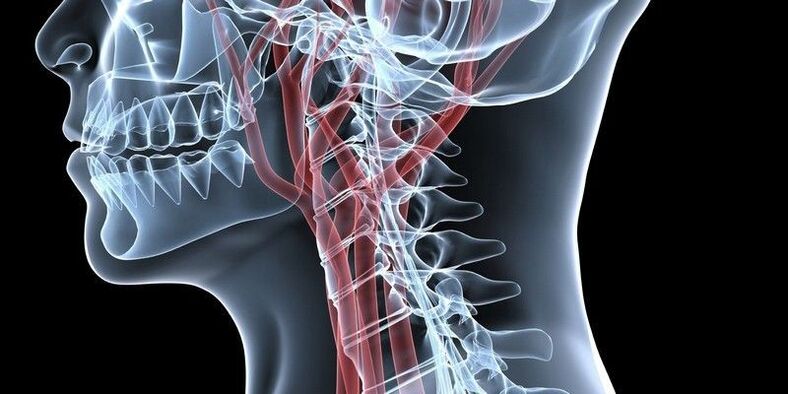
Thoracic spine osteochondrosis
With osteochondrosis of the thoracic area, which is diagnosed relatively rare, pain occurs in the spine at the shoulder blade level and can be intensified even when taking a deep breath.They are often felt behind the chest, which can be misunderstood as a heart disease.
When the spinal root is pinned, the risk of internal organ disease increases, in particular:
- bronchi and lungs (asthma, bronchitis, pneumonia, pleurisy);
- gall bladder and its tract, liver (cholecystitis, jaundice, fat absorption disorders);
- pancreas and duodenum (digestive disorders, pain in left hypochondria);
- The adrenal glands, which affect the overall strength of the immune system and can trigger allergic development;
- Kidney (urinary tract, chronic pyelonephritis, glomerulonephritis, etc.);
- pelvic organs (digestive disorders, gynecological diseases, urology, infertility).
Fact: Damage to the Thoracic vertebral intervertebral disc by osteochondrosis can lead to the development of diabetes mellitus.
Lumbosacral spinal osteochondrosis
With osteochondrosis of the lumbar area, lumbago, called lumbago, is observed.This is accompanied by burning, unbearable pain that occurs.Often, patients also find it difficult to sit, rise and walk, which may indicate the development of radicular syndrome.In such situations, it's easy to see how they are slowly sitting and standing, trying as much as possible to avoid tilt their bodies.
In the event of complications, the main danger of pinching the cauda nerve, as this can cause impaired control over the intestinal process and bladder, as well as paralysis.Also in such cases the following may develop:
- appendicitis;
- diarrhea, constipation;
- pain in the lower abdomen;
- bladder dysfunction;
- impotence;
- pain in the knees, feet, hips or thighs;
- swollen legs.
Complication
Osteochondrosis is the cause of a large number of different diseases.Often, if left untreated, it leads to the formation of hernia and intervertebral hernia.This in turn can cause:
- Discogenic myelopathy, which ends with paresis, muscle atrophy, tendon reflex change, loss of control over urine and water removal, as well as paralysis of the limbs;
- radiculopathy;
- scoliotic or other spinal defects;
- spinal cord infarction is caused by compression of the artery that consumes it;
- The stroke is caused by the compression of the occipital artery.
Diagnostics
The appearance of pain in the back and neck should be a reason to contact a neurologist or vertebrologist.The faster osteochondrosis is diagnosed, the easier and more effective treatment will be.
To diagnose the disease, interview the doctor and examine the patient.Based on the results, it is possible to consider the presence of degenerative changes in the intervertebral disc.But for the final diagnosis, instrumental diagnostic methods are set, including:
- MRI;
- Ct;
- X-ray in two projections.
Magnetic resonance imaging provides the most complete information on the state of the intervertebral disc.This procedure is mainly performed in a closed device with a power of 1.5 T. With its help, you can distinguish osteochondrosis from tuberculous spondylitis, osteomyelitis, infectious diseases, and others.
CT and X-ray scans provide information on the backbone of the spine.Thanks to them, it is possible to detect body displacement -vertebral body, the presence of osteophytes and other disorders.
In addition, the following may be set:
- Ultrasound with dopplerography of the neck vessel;
- Electromyography;
- Laboratory research.
Osteochondrosis treatment
Therapy is developed individually for each patient.In this case, the severity of the degenerative-dystrophic process, the presence of complications, the nature of the patient's work activity and various other factors must be taken into account.
All patients must be prescribed a set of steps, as it is impossible to eliminate pathological changes in the intervertebral disc only with the help of medication.Conservative therapy components for osteochondrosis may include:
- drug therapy;
- osteopathy;
- manual therapy;
- Physiotherapy (phonophyesis, ozone therapy, carboksytherapy, pressotherapy, RF current);
- Individual sessions with recovery.
All patients diagnosed with intervertebral disc disks are advised to reconsider their lifestyle.It is important to set aside time for moderate physical activity, especially for representatives of inactive professions, or, rather, to consider the possibility of changing the profession for people who have to lift heavy objects daily.
But in the acute period, complete rest is recommended.It is determined not only by maintaining a bed break, but also by wearing orthopedic bandages: in the event of damage to the cervical spine, shants collar is used;In the event of osteochondrosis in the lumbar region, it is recommended to wear a corset.
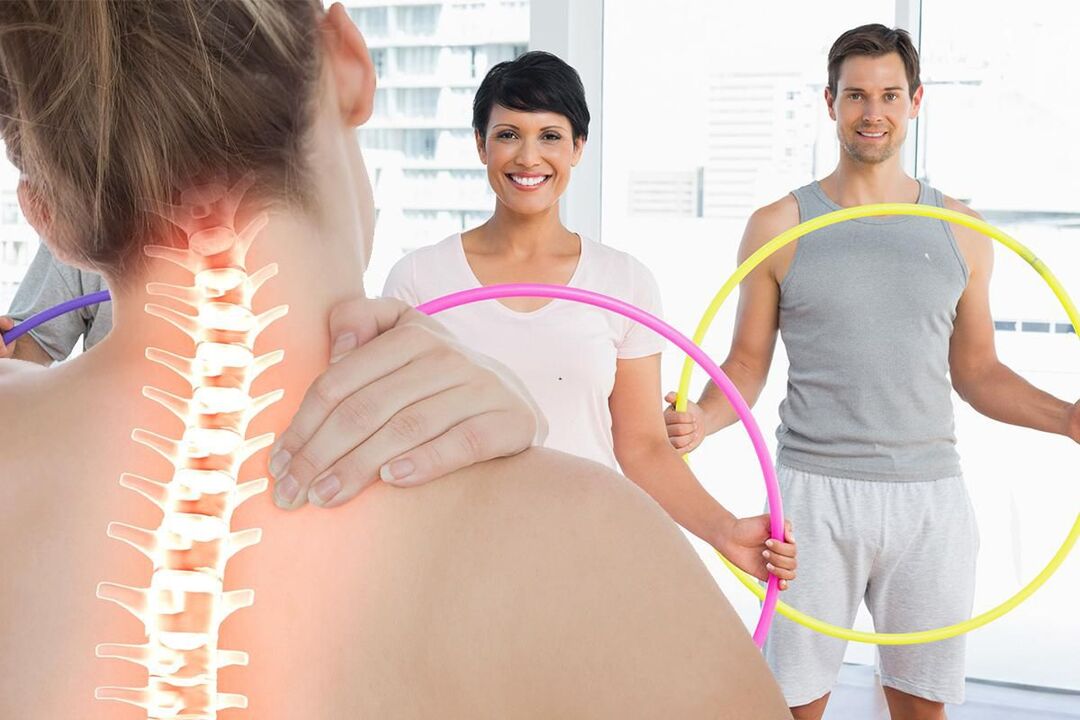
In the first stage of the development of the disease, it is often sufficient to make adjustments to your lifestyle, engage in exercise therapy and visit chiropractor.In more advanced cases, drug therapy and physiotherapy should be prescribed.
Never use self-medication in a dubious way, self-prescription anti-inflammatory drugs, as well as dubious "healers" that put themselves on the internet: you can lose not only time, money, but also your health residues.
Drug therapy
For osteochondrosis, the drug complex is prescribed to reduce pain, eliminate inflammation and reflex muscle cramps, improve nerve flow and activate the regeneration process of intervertebral disc tissue.
Therefore, the patient is prescribed:
- NSAID-helps reduce pain and have anti-inflammatory effects;
- corticosteroids-exacerbate strong anti-inflammatory properties;
- Muscle relaxants - eliminating muscle cramps, which help reduce back pain;
- Vitamin B - provides better functioning of the nervous system in general and the flow of nerve impulses throughout the individual's nerves in particular;
- Vitamin D is a drug responsible for bone tissue conditions, as well as higher brain function, such as memory, attention, speech;
- Chondroprotectors - nourish the intervertebral disc with the compounds needed for the construction of the new fible of nucleus pulposus;
- Psychotropic drugs-improve the effectiveness of non-steroidal anti-inflammatory drugs and muscle relaxants;
- Vascular medicine -increases blood circulation in the tissues surrounding the spine, ensuring the supply of nutrients and oxygen is more active to the intervertebral disc;
- Anticonvulsants - used in rare cases to relieve severe cramps.
For very severe pain, most often shows complications, patients can undergo a back blockade, which has an immediate effect.Sometimes corticosteroid hormones are added to solutions to implement restrictions.This also leads to significant anti-inflammatory effects.
Restrictions are made under the terms of absolute infertility, which can only be achieved in specialized medical institutions.At the same time, they need special knowledge and skills, so only a qualified health worker can survive the task.Otherwise, there is a high risk of infection or damage to nerve fibers, which will lead to the development of severe complications.
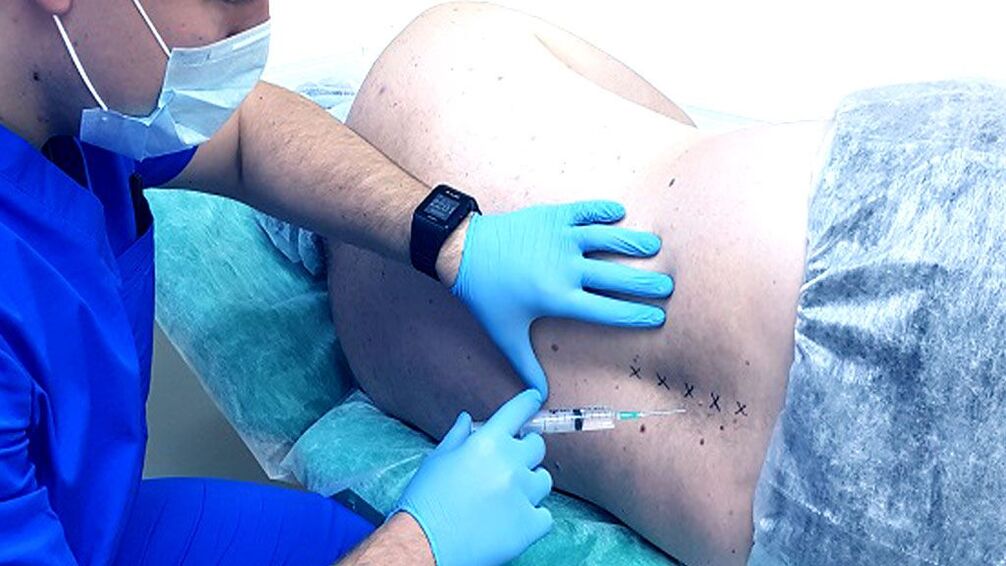
During restrictions, injections are usually given on both sides of the spine in the area where the nerves cause pain.There are several techniques for implementing them, including specifically selected by doctors individually.
But it is advisable to implement blockade no more than 4 times a year.Because with osteochondrosis, acute pain attacks, painful occurs more frequently, it is worth the first of all efforts to eliminate the causes of their occurrence, the degenerative-dystrophic process in the joints itself.
Manual therapy
Manual therapy sessions are prescribed outside the period of enlargement of osteochondrosis.They play one of the main roles in the treatment of the disease, as the use of competent manual techniques in the spine and surrounding tissues helps not only to stop the development of pathological processes in the intervertebral disc, but also to create the best conditions for their recovery.
In addition, certain techniques can also have a positive effect on the function of the internal organs.For example, one of the methods is designed, by normalizing the position of each vertebra, to eliminate pressure on the spinal cord, blood vessels and spinal membranes and thus restore the normal organ connection with the nervous system.This makes it possible to eliminate the hidden causes of the development of the disease above the heart, bronchus, lungs, kidneys, gastrointestinal tract and reproductive system and lead to complete recovery.
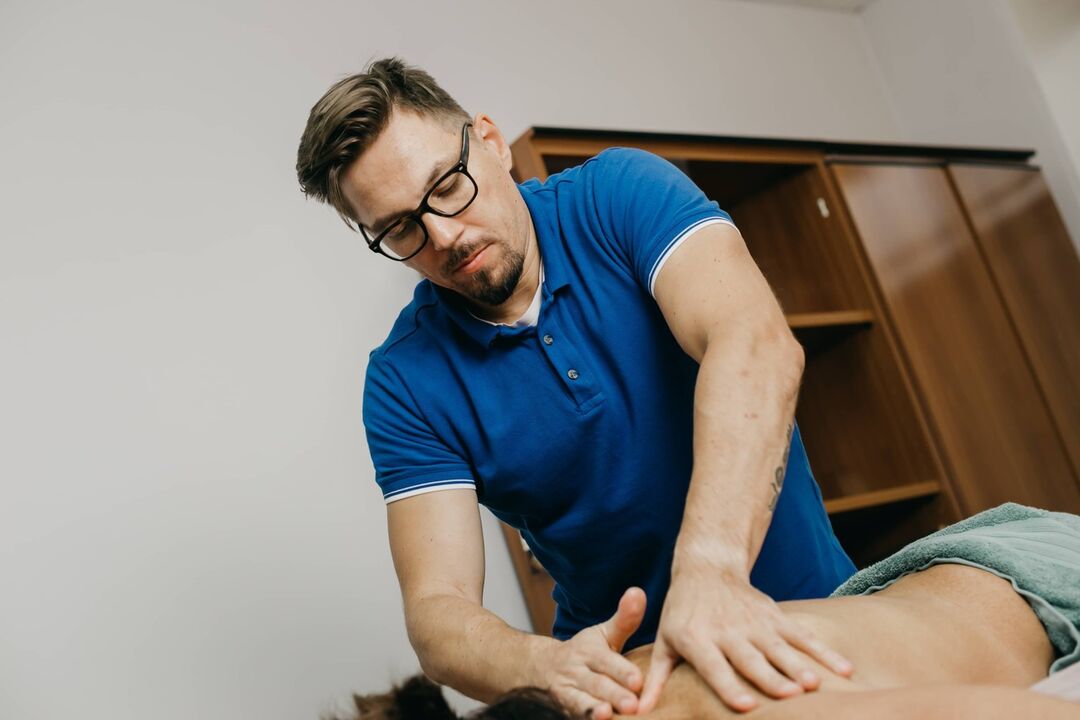
Thanks to the effects of jewelry on the spine, not only the blood circulation activates and the metabolism accelerates, such as classic therapeutic sequences, but also natural self -healing mechanisms.The removal of spinal curvature, improper position of the vertebra and other pathological changes in the spine through manual therapy can further strengthen the immune system, improve overall well -being and improve quality of life.
Positive changes can be observed after the first session, and in the future their severity will only increase.
Physiotherapy
Physiotherapy procedures enhance the effectiveness of all other methods for treating osteochondrosis and helps reduce pain.Most commonly used:
- Electrophoresis - the use of electric current to ensure anesthetic penetration, anti -inflammation and other agents directly to the inflammatory site, allowing you to quickly get a clear therapeutic effect;
- Ultrasound therapy - ultrasound effects have analgesic effects, increases the intensity of metabolic processes in the field of influence and creates prerequisites for high quality intervertebral disc discs;
- Detensor therapy - involves stretching and massaging the spine on a special ribbed mattress, which activates blood circulation and improves muscle tone;
- Spinal cord or traction therapy - is done using a special device that produces a tensile load on the spine, as a result the distance between the vertebrae increases and the pressure on the intervertebral disc is significantly reduced, which allows it to recover more.
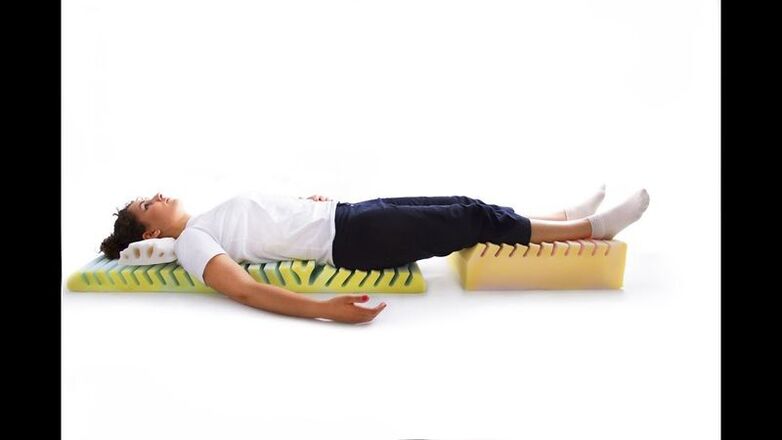
All procedures are set in the course of 10-15 sessions.When choosing them, they take into account not only the condition of the intervertebral disc, but also the presence of the same disease, as in some of them certain physical effects are contraindicated.
Exercise therapy
Therapeutic exercises for osteochondrosis play an important role, as properly selected exercises for damage to different parts of the spine can help form a strong muscle corset and at the same time eliminate increased muscle tone.This will provide good support for the spine and stop the development of the degenerative process in the intervertebral disc.In addition, exercise therapy helps activate blood circulation and improve the intensity of metabolic processes.
Describing a physical therapy program is the job of a recovery doctor.Based on the severity of the spinal cord, the characteristics of the patient's physical development, his age and other factors, he or she will create an optimal set of exercises, which will produce optimal burden on the muscles and spine.
The first class must be conducted under the supervision of a doctor.Once the patient learns to do each exercise properly, he or she is allowed to continue training at home.It is important to prevent the movement.All exercises are done daily slowly and smoothly, and the burden gradually increases.But the occurrence of pain during exercise is a good reason to refuse to do the training that causes it.

Prevention
It is easier to prevent the development of the disease than to deal with the consequences later.Since osteochondrosis can occur in everyone slowly, you should consider the risks that may be as early as possible and strive to prevent it.Therefore, everyone should comply with the following suggestions:
- Avoid physical inactivity, exercise regularly, swim, and during inactive work, take a regular rest to warm up;
- Note your posture while walking or sitting;
- buy high quality orthopedic mattresses and pillows;
- Note the right techniques for lifting weights: with straight knees and straight knees;
- Switch casual shoes to the most comfortable, and leave shoes for special occasions;
- Eat properly so that the body does not suffer from nutrition and weight loss is within normal limit.
There is only one way to avoid the appearance and manifestations of osteochondrosis symptoms - start taking care of yourself and your health.Because osteochondrosis is not just a disease, but a complex of muscle-tonic and neurodystrophic changes, which are the body's response to physical inactivity, chronic static tension of the spinal muscles, environmental conditions and chronic neurosis, especially among the city residents, swimming in the pool and stretching programs, including yoga.
Therefore, osteochondrosis is a very common disease, but with careful attention to your own health, you can fight it effectively at any age.But ignoring the problem will not lead to good and sooner or later forced the patient to lie down on the operating table.
























